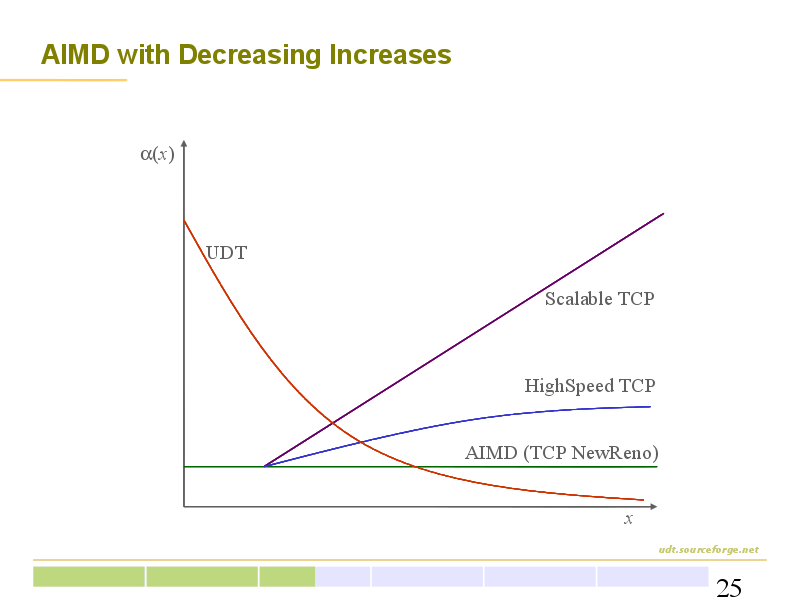

This figure illustrates the difference between several AIMD algorithms used in some TCP variants and UDT.
The standard AIMD used in TCP is a straight line because alpha(x) is a constant value. In several high speed TCP variants, the data sending rate increases faster and faster, and the intuition is that a higher sending rate may indicate that the network bandwidth is higher so the sending rate should increase faster.
However, this scheme has two problems. The network bandwidth is fixed. As the sending rate becomes faster, the available bandwidth actually becomes smaller. A high increase parameter may cause large oscillations around the optimal bandwidth utilization. The second problem is related to fairness: if the flow with higher sending rate increases faster, the system may never converge to a fairness equilibrium.
This discussion leads us to use a totally different scheme. On the one hand, at the beginning when the data sending rate of a flow is slow, it should increase faster to approach the network bandwidth and catch up with those flows that have already a higher sending rate. On the other hand, when the data sending rate of a flow is high, it should increase slower to avoid large oscillations.